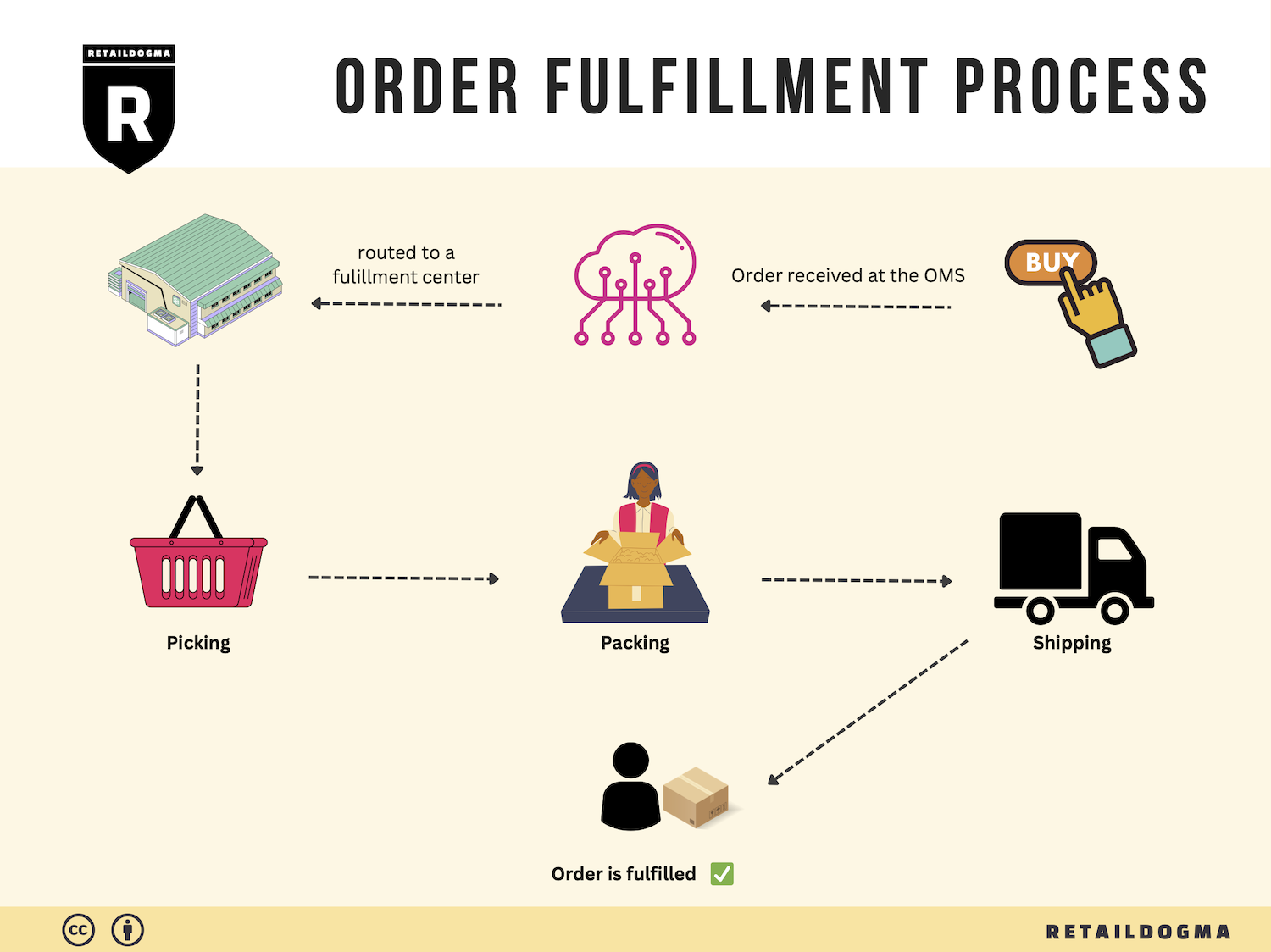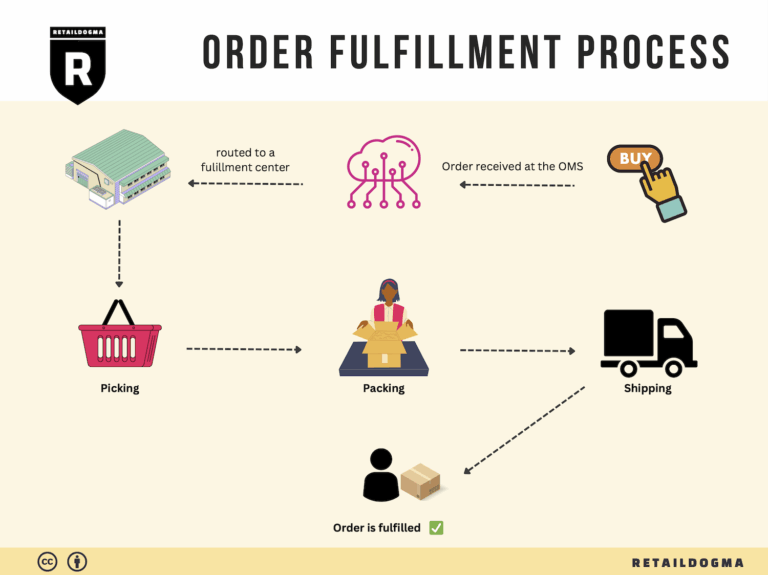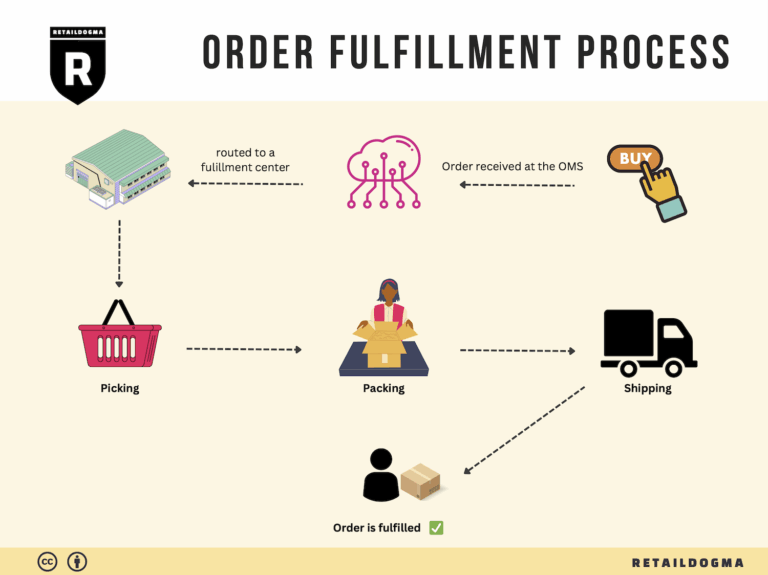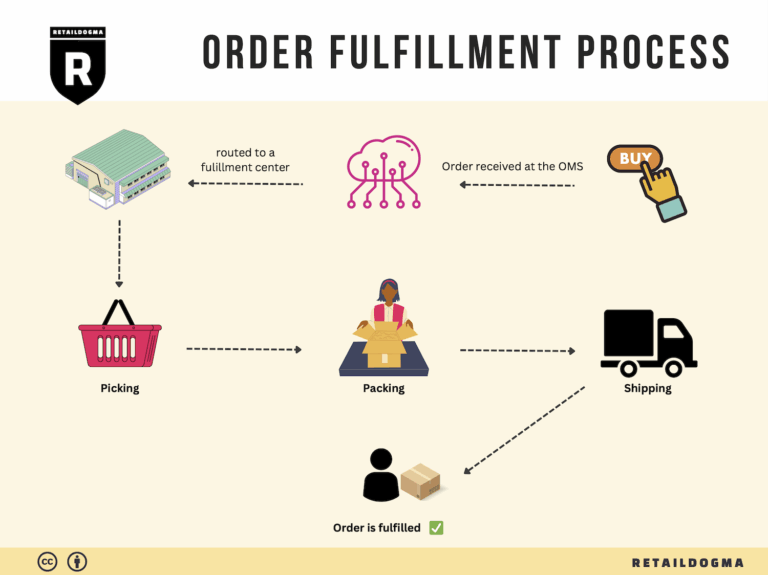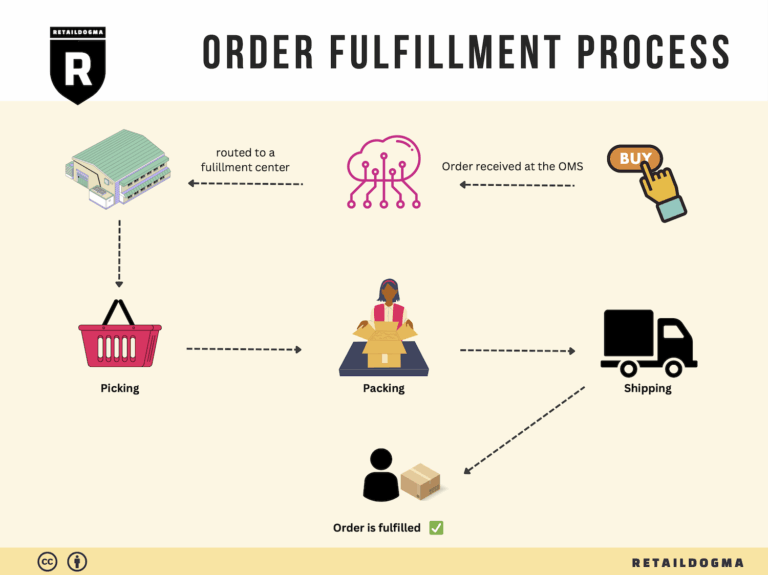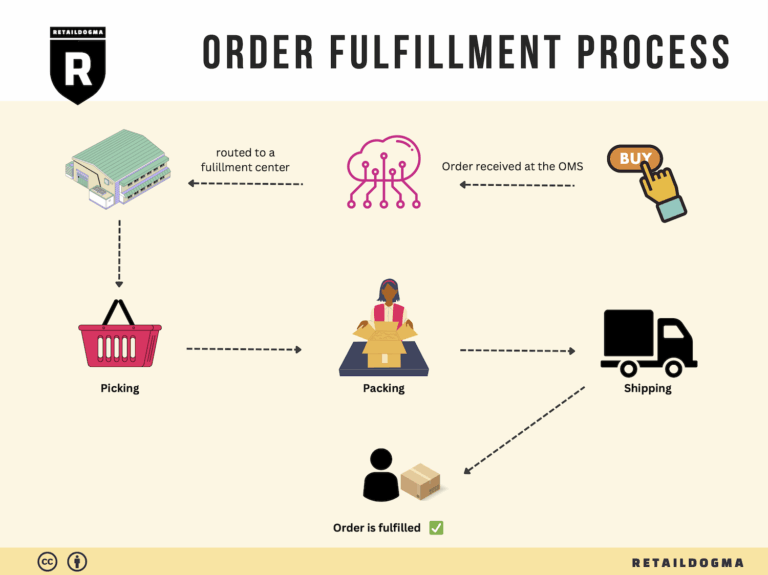What Is A Fulfillment Center? A Complete Guide (2025)
What is E-commerce Fulfillment? An Introduction for Growing Businesses
Understanding E-commerce Fulfillment
As a growing e-commerce business owner, you may often find yourself overwhelmed with the packing and shipping of orders. Juggling inventory management, order processing, and customer satisfaction can quickly become a logistical nightmare. This is where e-commerce fulfillment comes into play. Simply put, fulfillment is the process of getting a product from your inventory to your customer’s doorstep. It’s a critical component of your business that directly influences customer experience and operational efficiency.
In this guide, we will explore the essential aspects of e-commerce fulfillment tailored for businesses looking to scale their operations. We will start by examining different fulfillment models, including Third-Party Logistics (3PL) and Fulfillment by Amazon (FBA). Understanding these models will help you determine which approach aligns best with your business goals, customer expectations, and budget constraints.
Core Fulfillment Services
Next, we will delve into the core services that a good fulfillment partner should offer. This includes inventory storage, order processing, packaging, shipping, and returns management. Each of these components plays a pivotal role in ensuring that your products reach customers quickly and in good condition. We’ll also discuss the importance of technology in fulfillment, such as inventory management systems and tracking solutions, which can significantly enhance efficiency.
Choosing the Right Fulfillment Partner
Selecting the right fulfillment partner is crucial for your business’s success. We will provide practical tips on how to evaluate potential partners based on factors like location, service offerings, technology capabilities, and customer support. We will also touch upon the significance of scalability—ensuring that your fulfillment partner can grow with your business as your order volumes increase.
Understanding Pricing Models
Finally, we will break down the various pricing structures you might encounter when working with fulfillment providers. From per-order fees to storage costs, understanding these expenses is vital for budgeting and maintaining your profit margins.
Empowering Your Business Decisions
The ultimate goal of this guide is to empower you to make informed decisions about your logistics strategy. By understanding the intricacies of e-commerce fulfillment, you can streamline your operations, improve customer satisfaction, and position your business for sustainable growth. Whether you’re just starting out or looking to optimize your existing processes, this guide will serve as a valuable resource in navigating the complexities of e-commerce fulfillment.
What You’ll Learn In This Guide
- What is E-commerce Fulfillment? An Introduction for Growing Businesses
- The Order Fulfillment Process: From ‘Buy’ Button to Customer’s Door
- Comparing Fulfillment Models: In-House vs. 3PL vs. Dropshipping
- A Deep Dive into Amazon FBA: Pros, Cons, and Who It’s For
- Core Services Offered by Fulfillment Centers
- How to Choose a Fulfillment Partner: A 6-Point Checklist
- Understanding Fulfillment Pricing: A Breakdown of Common Fees
- Frequently Asked Questions (FAQs) about Fulfillment
- Conclusion: Is Outsourcing Fulfillment the Right Move for Your Business?
- Important Disclaimer
The Order Fulfillment Process: From ‘Buy’ Button to Customer’s Door
1. Receiving Inventory
The first step in the order fulfillment process is receiving inventory. When products arrive at the fulfillment center, they must be checked against purchase orders to ensure accuracy. This involves verifying quantities and inspecting for any damages. This step is crucial because it sets the foundation for efficient inventory management and customer satisfaction. Any discrepancies at this stage can lead to stockouts or delayed shipments, negatively impacting sales and customer trust.
A key term associated with this step is SKU (Stock Keeping Unit). Each product is assigned a unique SKU, allowing for easy tracking and management of inventory levels. Efficient receiving processes help businesses maintain optimal stock levels, reducing the risk of overstocking or understocking, which can lead to increased costs or lost sales opportunities.
2. Warehouse Storage
After inventory has been received and verified, the next step is warehouse storage. Products are organized and stored in designated locations within the fulfillment center. This organization is often based on several factors, including product type, size, and demand. Effective storage strategies are vital for maximizing space utilization and facilitating quick access to products when orders are placed.
The importance of this step cannot be overstated; proper storage minimizes retrieval times and maximizes efficiency in the picking process. A common term related to warehouse storage is ABC analysis, which categorizes inventory into three classes based on their importance. ‘A’ items are high-value or high-demand products that require frequent replenishment, while ‘C’ items are lower-value and less frequently sold. This analysis helps businesses prioritize their storage strategies, ensuring that the most critical items are easily accessible.
3. Order Picking
Once an order is placed, the next step is order picking. In this phase, employees or automated systems locate the products associated with the order and retrieve them from their storage locations. Efficient order picking is essential for reducing lead times and ensuring that customers receive their orders promptly.
There are various methods for order picking, including pick lists, which are generated to guide workers to the exact locations of items needed for an order. This helps streamline the picking process, minimizing errors and improving speed. The significance of this step lies in its direct impact on customer satisfaction; faster and accurate picking leads to timely deliveries, which can enhance brand loyalty and encourage repeat business.
4. Order Packing
Following the picking phase, the next step is order packing. This involves carefully packaging the items to protect them during transit and ensuring they arrive in excellent condition. Proper packing is crucial not only for protecting the product but also for optimizing shipping costs and space.
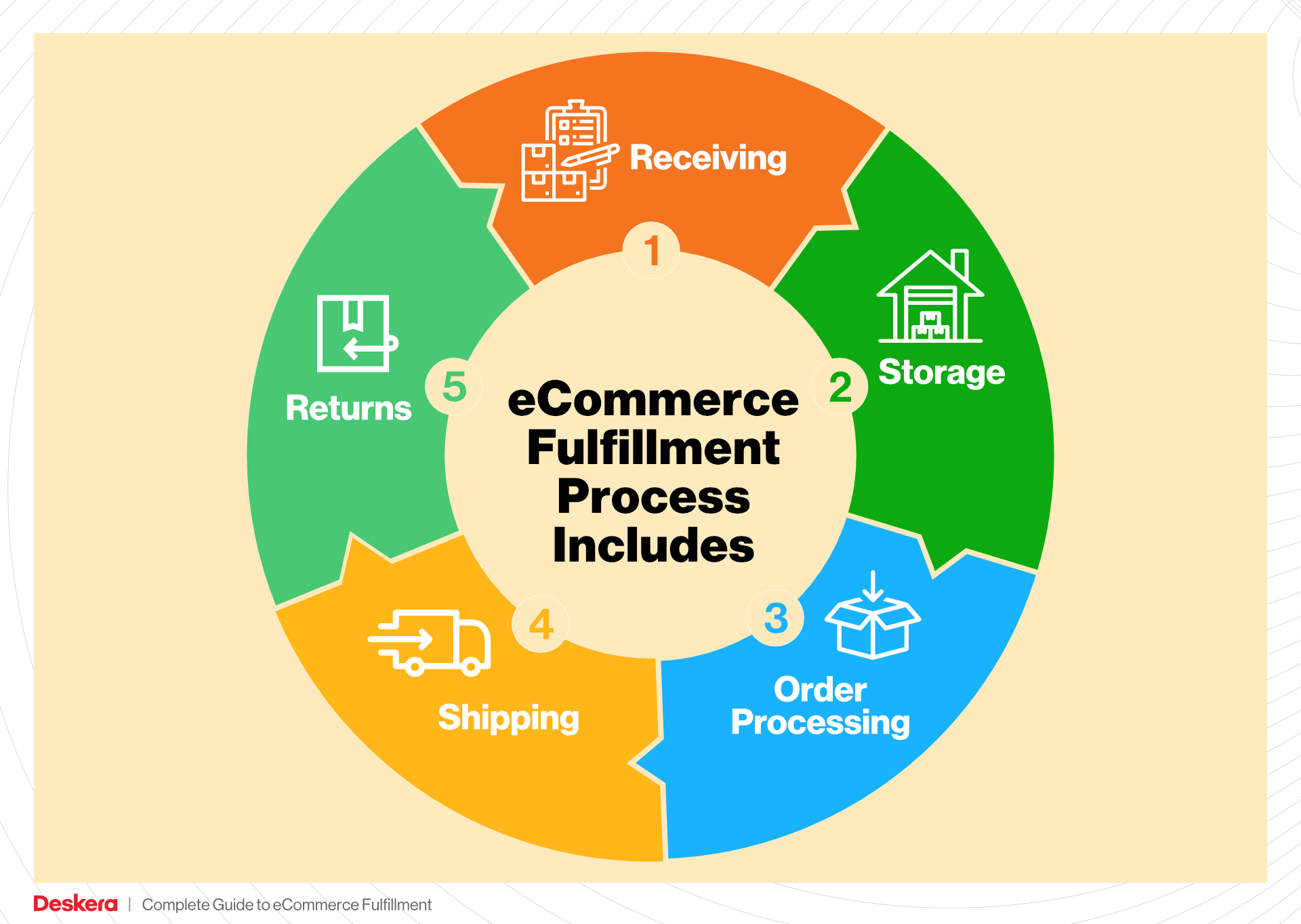
During this step, businesses often utilize packing slips, which accompany the order and provide essential information such as item descriptions, quantities, and shipping details. The packing process also includes labeling the package with shipping information and any necessary tracking details. This step is vital because well-packed orders reduce the likelihood of returns due to damage, thereby improving overall customer satisfaction and reducing costs associated with returns and replacements.
5. Shipping & Delivery
The final step in the order fulfillment process is shipping and delivery. Once the order is packed and labeled, it is handed over to a shipping carrier for delivery to the customer. This phase is crucial as it determines the speed and reliability of the order’s arrival, directly influencing customer satisfaction.
A key term in this step is last mile delivery, which refers to the final leg of the shipping process where the package is delivered from a distribution center to the customer’s doorstep. Efficient last-mile delivery is essential for maintaining competitive advantage in today’s e-commerce landscape. Businesses must choose reliable shipping partners and consider factors such as shipping speed, costs, and tracking capabilities to ensure a seamless delivery experience. Timely delivery enhances customer satisfaction and can lead to positive reviews and repeat business, which are vital for scaling e-commerce operations.
In conclusion, understanding and optimizing each step of the order fulfillment process—from receiving inventory to shipping and delivery—is essential for e-commerce businesses looking to scale. By focusing on efficiency and accuracy at each stage, businesses can improve customer satisfaction and drive growth.
Comparing Fulfillment Models: In-House vs. 3PL vs. Dropshipping
Fulfillment Models Overview
When it comes to scaling your e-commerce business, choosing the right fulfillment model is crucial. The decision impacts not only your operational efficiency but also your customer satisfaction and overall profitability. Below is a comparative table that outlines three common fulfillment models: In-House Fulfillment, Third-Party Logistics (3PL), and Dropshipping.
| Model | Who Handles Inventory | Best For (Business Stage) | Key Advantage | Key Disadvantage |
|---|---|---|---|---|
| In-House Fulfillment | The business itself | Established businesses | Full control over inventory and processes | High overhead costs |
| Third-Party Logistics (3PL) | 3PL provider | Growing businesses | Cost-effective and scalable solutions | Less control over inventory and processes |
| Dropshipping | Supplier | Startups and small businesses | Minimal upfront investment | Lower profit margins and potential quality issues |
In-House Fulfillment
In-house fulfillment means that your business manages its own inventory and shipping processes. This model is typically best suited for established businesses that have the resources and operational capacity to handle logistics internally.
Key Advantages:
The primary advantage of in-house fulfillment is the level of control it offers. Businesses can manage every aspect of the inventory process, from storage to shipping, ensuring quality control and the ability to implement custom packaging or branding. This can lead to improved customer satisfaction, as any issues can be addressed immediately. Additionally, businesses can better manage their inventory levels, enabling more accurate forecasting and reduced stockouts.
Key Disadvantages:
However, this model comes with significant overhead costs. Managing a warehouse requires a substantial investment in space, labor, and technology. As a business scales, these costs can escalate quickly, making it difficult to maintain profit margins. Furthermore, in-house fulfillment can strain resources, diverting attention from core business activities like marketing and product development.
Third-Party Logistics (3PL)
Third-party logistics (3PL) involves partnering with a logistics provider to handle inventory management, warehousing, and shipping. This model is ideal for growing businesses that want to scale without the burden of managing logistics themselves.
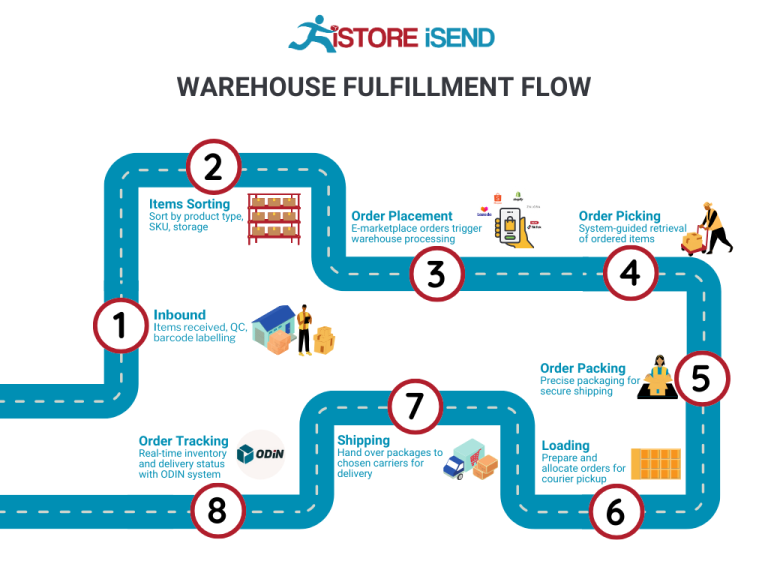
Key Advantages:
The main advantage of 3PL is cost-effectiveness. By outsourcing logistics, businesses can avoid the high overhead costs associated with maintaining their own warehouses and shipping operations. 3PL providers offer scalable solutions that can adapt to your business needs, allowing you to focus on other critical areas like marketing and customer service. Additionally, many 3PL providers have established networks and expertise in logistics, which can lead to faster shipping times and improved customer satisfaction.
Key Disadvantages:
The downside of using a 3PL is the reduction in control over your inventory and fulfillment processes. Businesses may face challenges with communication and coordination, which can lead to delays or errors. Moreover, relying on a third party means that any issues in the fulfillment process could directly affect your brand reputation. It’s essential to choose a reputable provider to mitigate these risks.
Dropshipping
Dropshipping is a fulfillment model where the supplier holds the inventory and ships products directly to the customer on behalf of the retailer. This model is particularly suitable for startups and small businesses with limited capital.
Key Advantages:
One of the most significant benefits of dropshipping is the minimal upfront investment required. Businesses do not need to purchase inventory in advance, which reduces financial risk. This model allows entrepreneurs to test new products without committing to large inventory purchases. Additionally, dropshipping enables businesses to offer a wide range of products without the burden of managing stock.
Key Disadvantages:
However, dropshipping has its own set of challenges. Profit margins are typically lower compared to other fulfillment models, as suppliers take a cut of the sales price. Quality control can also be an issue, as businesses rely on suppliers to maintain product standards and shipping times. Any delays or product issues can lead to customer dissatisfaction, which can harm your brand’s reputation. Therefore, it’s crucial to establish strong relationships with reliable suppliers and continuously monitor their performance.
Conclusion
Choosing the right fulfillment model is a critical decision for e-commerce businesses looking to scale. Each model—In-House Fulfillment, 3PL, and Dropshipping—has its own set of advantages and disadvantages. It’s essential to evaluate your business’s current stage, operational capabilities, and long-term goals when making this decision. By understanding these models thoroughly, you can implement the most effective fulfillment strategy that aligns with your business objectives and customer expectations.
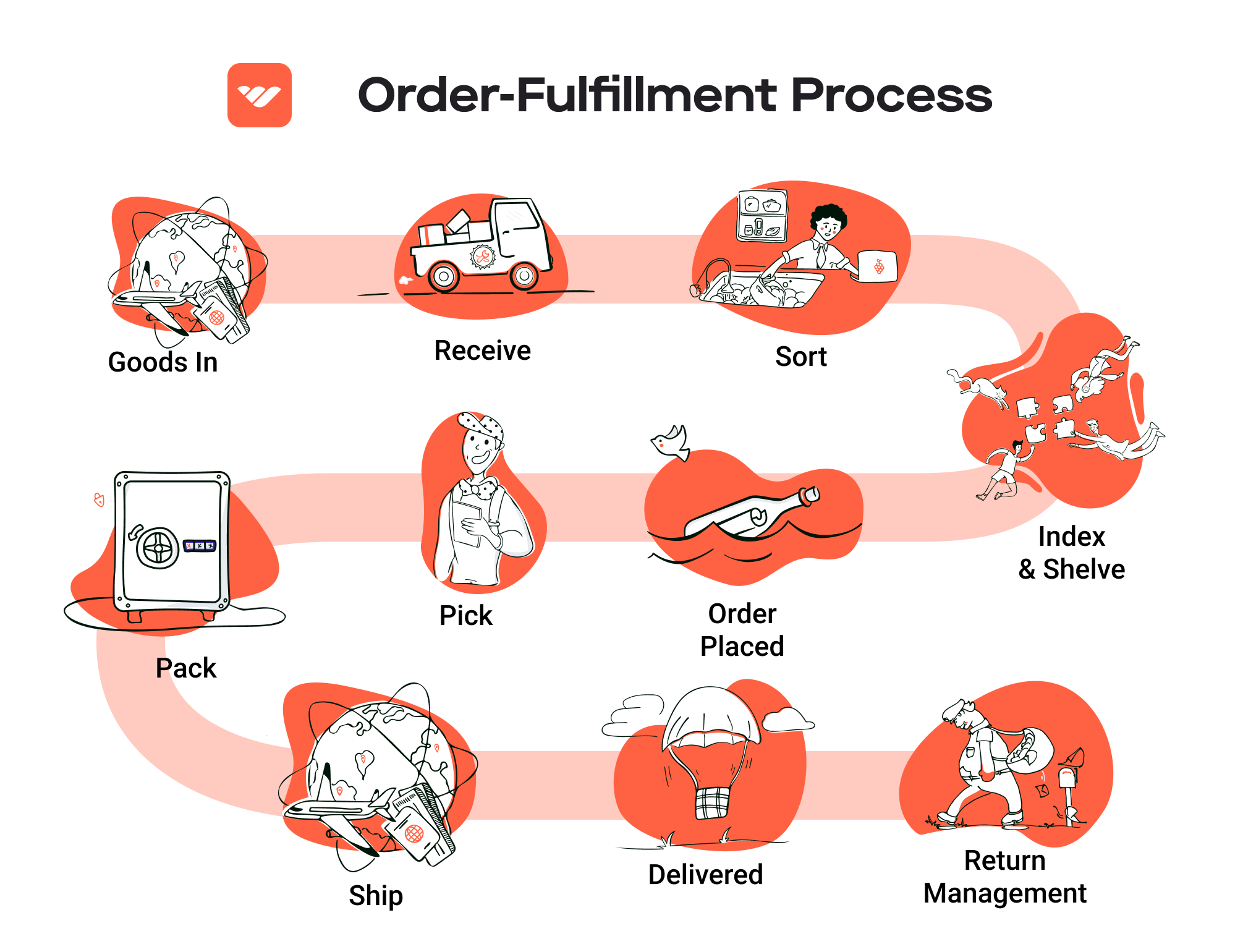
A Deep Dive into Amazon FBA: Pros, Cons, and Who It’s For
Understanding Fulfillment by Amazon (FBA)
Fulfillment by Amazon (FBA) is a service provided by Amazon that allows e-commerce sellers to store their products in Amazon’s fulfillment centers. Amazon takes care of storage, packaging, and shipping, as well as customer service and returns. This service is particularly attractive for businesses looking to scale quickly without investing heavily in logistics infrastructure.
When a customer places an order for a product that is fulfilled by Amazon, the item is picked from the inventory stored in Amazon’s warehouse, packaged, and shipped directly to the customer. This process is streamlined and efficient, leveraging Amazon’s advanced logistics network to ensure prompt delivery.
How FBA Works
-
Setup and Registration: Sellers sign up for an Amazon seller account and enroll in the FBA program.
-
Inventory Management: After enrolling, sellers can ship their products to Amazon’s fulfillment centers. Amazon provides guidelines for labeling and packaging products to ensure they meet their standards.
-
Storage and Fulfillment: Once the products arrive at the fulfillment centers, they are stored until they are sold. When an order is placed, Amazon’s system automatically picks, packs, and ships the product to the customer.
-
Customer Service and Returns: Amazon handles all customer service inquiries related to FBA orders, including returns and refunds, relieving sellers of these responsibilities.
-
Sales Reporting and Analytics: Sellers have access to detailed reports and analytics through their Amazon seller dashboard, allowing them to monitor sales performance and inventory levels.
Pros of Using FBA
Prime Eligibility
One of the most significant advantages of using FBA is that products become eligible for Amazon Prime. This is a game-changer for sellers, as Prime members tend to have higher purchase frequencies and are more likely to buy items that offer free two-day shipping.
Customer Trust
Products fulfilled by Amazon often carry an implicit trust factor. Customers feel secure purchasing items that are backed by Amazon’s customer service and return policies. This trust can lead to increased conversion rates and fewer abandoned carts.
Multi-Channel Fulfillment
FBA is not limited to Amazon sales. Sellers can utilize FBA for fulfilling orders from their own websites or other e-commerce platforms. This multi-channel fulfillment option allows for a streamlined logistics process and can help businesses reach a broader audience.
Scalability
FBA allows sellers to scale their operations quickly. As orders increase, Amazon can handle the logistics without requiring sellers to invest in additional warehousing or staffing. This scalability is particularly beneficial during peak seasons or when launching new products.
Simplified Logistics
Using FBA means that sellers can focus on other aspects of their business, such as product development and marketing, rather than dealing with the complexities of order fulfillment and shipping logistics.
Cons of Using FBA
High Fees
While FBA offers many benefits, it is not without its costs. Amazon charges various fees, including storage fees for inventory stored in their warehouses and fulfillment fees for each item sold. These fees can add up, particularly for sellers with lower profit margins or slow-moving inventory.
Strict Inventory Rules
Sellers must adhere to Amazon’s strict inventory management rules, including limitations on the number of units that can be stored and requirements for labeling. Failure to comply can lead to additional charges or restrictions on account access.
Commingling Risks
When using FBA, sellers’ products may be commingled with those of other sellers. This can lead to issues if a customer receives a damaged or defective item that is not from the original seller. In such cases, the original seller could be held accountable, leading to negative reviews and potential loss of customer trust.
Loss of Control
By outsourcing fulfillment to Amazon, sellers relinquish a degree of control over their inventory and customer experience. This can be concerning for businesses that prioritize brand identity and customer service.
Dependency on Amazon
Relying heavily on FBA can create a dependency on Amazon’s platform and policies. Changes in Amazon’s algorithms, fee structures, or service quality can significantly impact a seller’s business operations and profitability.
Who is FBA Best For?
Fulfillment by Amazon is best suited for:
-
Small to Medium-Sized Businesses: Companies that lack the resources to manage their own logistics and want to leverage Amazon’s infrastructure for growth.
-
High-Volume Sellers: Businesses that can benefit from the scale of Amazon’s fulfillment network, especially during peak seasons.
-
E-commerce Startups: New businesses looking to establish themselves quickly without the burden of managing logistics can find FBA to be an effective solution.
-
Brands with a Strong Online Presence: Companies that have a solid marketing strategy and are ready to take advantage of Prime membership and Amazon’s customer base.
-
Sellers Looking for Passive Logistics Management: Entrepreneurs who prefer to focus on product development and marketing rather than day-to-day logistics will find FBA a suitable option.
In conclusion, while FBA offers numerous advantages for scaling e-commerce businesses, it is essential for sellers to carefully weigh the pros and cons. Understanding the structure of fees, inventory management rules, and the potential risks involved with commingling can help sellers make informed decisions about whether FBA is the right fit for their business.
Core Services Offered by Fulfillment Centers
Inventory Management & Warehousing
Inventory management and warehousing are foundational services provided by fulfillment centers that play a critical role in the efficiency of e-commerce operations. This service involves the systematic tracking of inventory levels, orders, sales, and deliveries. Fulfillment centers utilize advanced software systems to manage stock levels, ensuring that products are stored in optimal conditions and that inventory turnover is effectively monitored.
Benefits:
1. Real-Time Visibility: E-commerce businesses gain access to real-time data regarding inventory levels, which helps in making informed purchasing and stocking decisions. This visibility reduces the risks associated with overstocking or stockouts.
-
Cost Efficiency: By utilizing shared warehousing space, businesses can significantly reduce overhead costs associated with maintaining their own storage facilities. Fulfillment centers also often provide climate-controlled environments, ensuring product integrity, especially for sensitive items.
-
Scalability: As businesses grow, fulfillment centers offer the flexibility to scale inventory management operations up or down based on seasonal demand or business fluctuations, allowing for greater adaptability without the need for significant investment in physical space.
Pick and Pack Services
Pick and pack services are essential for fulfilling customer orders efficiently. This process involves selecting items from the warehouse (picking) and packaging them for shipment (packing). Fulfillment centers employ technology and trained staff to ensure that orders are processed quickly and accurately.
Benefits:
1. Speed and Accuracy: Fulfillment centers are equipped with optimized picking routes and packing stations, which significantly enhance the speed of order processing. This efficiency results in faster shipping times, improving customer satisfaction.
-
Error Reduction: With automated systems and quality control checks in place, the likelihood of errors in order fulfillment is minimized. This precision not only enhances customer experience but also reduces costs associated with returns and exchanges.
-
Customization Options: Many fulfillment centers offer customizable packaging solutions, allowing e-commerce businesses to enhance their brand presentation. This service can include branded boxes, packing materials, and even personalized messages, which can foster customer loyalty.
Kitting and Assembly
Kitting and assembly services involve the grouping of individual items into a single ready-to-ship product, which can include assembling components or creating bundles of products. This service is particularly beneficial for businesses that offer product sets or require complex assembly.
Benefits:
1. Streamlined Production: By outsourcing kitting and assembly, e-commerce businesses can streamline their production processes, allowing them to focus on core activities like marketing and sales. This efficiency can lead to improved operational productivity.
-
Enhanced Customer Offerings: Kitting allows businesses to create attractive bundled offers that can increase average order value. For example, a cosmetic brand might bundle a lipstick with a matching lip liner, appealing to customers looking for convenience.
-
Inventory Optimization: Kitting can help manage inventory more effectively by reducing the number of individual SKUs that need to be tracked. This consolidation can simplify inventory management and reduce holding costs.
Returns Management (Reverse Logistics)
Returns management, or reverse logistics, is a critical service that handles the return of products from customers back to the fulfillment center. Effective returns management is essential in the e-commerce landscape, where return rates can be high.
Benefits:
1. Customer Satisfaction: A streamlined returns process enhances customer satisfaction, as easy returns can lead to repeat business. Fulfillment centers often provide pre-paid return labels and quick processing of returns, making it easier for customers to return unwanted items.
-
Cost Reduction: By efficiently managing returns, businesses can minimize losses associated with returned products. Fulfillment centers can assess the condition of returned items, determine whether they can be restocked or need to be discounted, and facilitate the process accordingly.
-
Data Insights: Returns management can provide valuable insights into product performance and customer preferences. Analyzing return data helps businesses identify trends and issues, enabling them to make informed decisions about product offerings and improvements.
In conclusion, partnering with a fulfillment center for these core services allows e-commerce businesses to optimize their operations, improve customer experiences, and ultimately scale their logistics capabilities effectively. By leveraging the expertise and resources of fulfillment centers, entrepreneurs can focus on growth while ensuring that their logistics run smoothly.
How to Choose a Fulfillment Partner: A 6-Point Checklist
Location & Warehouse Network
Importance:
The geographical location of your fulfillment partner plays a critical role in your logistics strategy. A strategically located warehouse network can significantly reduce shipping times and costs, enhancing customer satisfaction. Proximity to key markets can also help in meeting same-day or next-day delivery expectations.
Questions to Ask:
1. Where are your fulfillment centers located, and how does that align with our target market?
2. What is the average shipping time to various regions from your warehouses?
3. Do you have multiple locations to support diverse shipping needs?
4. How do you manage inventory across different locations?
Technology & Integrations
Importance:
In the digital age, the technology stack of your fulfillment partner can either streamline or hinder your operations. A partner with robust technology and seamless integrations can enhance order processing, inventory management, and overall efficiency.
Questions to Ask:
1. What fulfillment management software do you use, and how does it integrate with our existing e-commerce platforms (like Shopify, Amazon, etc.)?
2. Can your system support real-time inventory tracking and reporting?
3. How do you handle order updates and communication with our customers?
4. What security measures are in place to protect our data?
Specializations (e.g., Cold Storage, Oversized Items)
Importance:
Not all fulfillment partners are equipped to handle every type of product. If your business deals with specialized items—such as perishables, oversized products, or hazardous materials—it’s essential to find a partner with the necessary capabilities and compliance.
Questions to Ask:
1. What special handling capabilities do you offer (e.g., cold storage, fragile items)?
2. Are your facilities compliant with relevant regulations for our product categories?
3. How do you manage inventory for specialized products?
4. What is your process for handling returns and damaged items?
Scalability & Capacity
Importance:
As your business grows, your fulfillment partner must be able to scale with you. This includes the ability to handle fluctuating order volumes, especially during peak seasons or promotional events. A partner with sufficient capacity can prevent bottlenecks and maintain service quality.
Questions to Ask:
1. How do you manage seasonal demand fluctuations?
2. What is your current capacity, and how much can you scale in response to our growth?
3. Are there any limitations on the volume of orders you can handle?
4. How do you ensure consistent service quality during peak times?
Pricing and Contracts
Importance:
Understanding the pricing structure of your fulfillment partner is crucial for budgeting and profitability. Transparent pricing models can help you avoid unexpected costs and ensure that your fulfillment expenses align with your financial goals.
Questions to Ask:
1. What is your pricing structure (per order, per item, monthly fees)?
2. Are there any additional fees we should be aware of (e.g., storage fees, pick and pack fees)?
3. What are the contract terms, and is there flexibility for renegotiation as our business evolves?
4. How do you handle billing discrepancies or disputes?
Customer Support & Reviews
Importance:
Reliable customer support can be the difference between smooth operations and logistical nightmares. A partner with a strong reputation for customer service can provide peace of mind, knowing that issues will be addressed promptly.
Questions to Ask:
1. What are your customer support hours, and how can we reach you in case of issues?
2. What is your average response time for customer inquiries?
3. Can you provide references or reviews from current clients?
4. How do you handle customer complaints and feedback?
Conclusion
Choosing the right fulfillment partner is a critical decision for any e-commerce business aiming to scale. By carefully evaluating potential partners based on the criteria outlined in this checklist, you can ensure that your logistics operations align with your business goals and customer expectations. Engage in thorough discussions, and don’t hesitate to request demos or site visits to get a real feel for the partner’s capabilities and culture. The right partner will not only support your current needs but also grow with you in the dynamic e-commerce landscape.
Understanding Fulfillment Pricing: A Breakdown of Common Fees
Initial Setup Fees
Initial setup fees are one-time charges that are incurred when a business begins using a fulfillment service. These fees cover the onboarding process, which typically includes account setup, integration with your e-commerce platform, and initial training on how to use the fulfillment center’s system. Depending on the complexity of your needs, the setup fee can range from a few hundred to several thousand dollars.
Calculation of initial setup fees often takes into account the number of SKUs (Stock Keeping Units) you plan to ship, the level of customization required for your account, and the time needed for training and system integration. Businesses should ensure they understand the scope of services included in the setup fee, as some providers may charge additional fees for specific integrations or custom solutions.
Receiving Fees
Receiving fees are charged when inventory is delivered to the fulfillment center. This fee covers the labor and resources needed to unload, inspect, and store your products. It is typically calculated on a per-pallet or per-bin basis, meaning the more inventory you send, the higher the receiving fees.
The cost of receiving fees can vary significantly based on the type of products you are sending. For example, fragile or bulky items may incur higher receiving fees due to the additional care required during handling. To minimize these fees, businesses should consolidate shipments and ensure that their products are packaged efficiently to reduce the number of pallets or bins required.
Storage Fees (per pallet/bin)
Storage fees are ongoing charges that businesses incur for keeping their inventory in the fulfillment center. These fees are usually calculated on a monthly basis and can be charged per pallet or per bin, depending on the fulfillment provider’s pricing structure.
Storage fees can vary based on the time of year, with peak seasons (like the holidays) often leading to higher fees due to increased demand for space. Additionally, some providers may have tiered pricing, where the rate decreases as the volume of stored inventory increases. To effectively manage storage costs, businesses should monitor inventory turnover rates and implement strategies to minimize excess stock, such as running promotions or optimizing reorder points.
Pick & Pack Fees (per item/order)
Pick and pack fees are charged for the process of retrieving items from inventory and preparing them for shipment. This fee is typically calculated on a per-item or per-order basis. The fee structure may include a base charge for picking items and an additional fee for packing them.
Factors that can influence pick and pack fees include the complexity of the order (e.g., multiple items versus single items), the type of packaging used, and any special handling requirements. Businesses can reduce these costs by optimizing their product offerings and packaging to streamline the picking and packing process, and by considering bulk orders to minimize the number of individual shipments.
Shipping Fees
Shipping fees are the costs associated with transporting packages from the fulfillment center to the end customer. These fees can vary widely based on factors such as the shipping method (standard, expedited, etc.), the destination, and the weight and dimensions of the package.
Shipping fees are usually calculated based on carrier rates, which may include discounts offered by fulfillment providers due to volume shipping. Businesses should compare shipping rates across different carriers and consider using a fulfillment center that offers discounted shipping rates. Additionally, implementing strategies such as optimizing box sizes and weights can help reduce overall shipping costs.
Tips for Getting an Accurate Quote
To obtain an accurate quote for fulfillment services, businesses should:
-
Provide Detailed Information: Be prepared to share specifics about your product types, volumes, and any special handling requirements. The more information you provide, the more accurate the quote will be.
-
Ask About All Fees: Ensure you ask for a complete breakdown of all potential fees, including any additional charges that may not be immediately apparent.
-
Consider Seasonal Variations: Discuss how fees may change during peak seasons and inquire about any strategies the provider has in place to mitigate these costs.
-
Request Sample Quotes: If possible, request quotes for different scenarios (e.g., varying order sizes or frequencies) to understand how your costs may fluctuate.
-
Negotiate Terms: Don’t hesitate to negotiate terms or seek discounts based on your expected volume. Many fulfillment centers are open to discussions, especially for long-term contracts.
By understanding these common fulfillment pricing models, e-commerce business owners can make informed decisions that align with their operational strategies and financial goals.
Frequently Asked Questions (FAQs) about Fulfillment
1. What is an Amazon Fulfillment Center Tour?
An Amazon Fulfillment Center Tour is a guided experience that allows visitors to see behind the scenes of Amazon’s operations. Participants can learn about the technology and processes that enable Amazon to fulfill customer orders efficiently. The tours typically last between 60-90 minutes and cover various aspects of the fulfillment process.
2. How do I book a tour at the LGB3 fulfillment center?
To book a tour at the LGB3 fulfillment center, visit the Amazon Tours website where you can select available dates and times. Reservations are required, and it’s recommended to book in advance as spots may fill up quickly. Private group tours are also available for groups of 10-25.
3. What should I wear to the tour?
For safety and security, visitors must wear flat, closed-toed shoes. Long pants are recommended, and shirts should have sleeves. Avoid sandals, clogs, high heels, and any loose-fitting clothing or accessories that could pose a safety hazard. Ensure that long hair is tied back.
4. Are children allowed on the tour?
Yes, children are welcome on the tour; however, they must be at least 6 years old to participate. All minors must be accompanied by an adult, and there should be at least one adult for every 10 minors. Adults are responsible for the safety and behavior of the children during the tour.
5. What are the security requirements for the tour?
Visitors must present a government-issued photo ID upon arrival, and the information must match what was submitted during registration. Children under 18 are not required to provide ID. Visitor badges issued at check-in must be worn at all times for identification and security.
6. Is there any cost associated with the tour?
No, the tours at Amazon Fulfillment Centers, including LGB3, are free of charge. However, booking in advance is essential, as spots may be limited and demand can be high.
7. What is the difference between a warehouse and a fulfillment center?
A warehouse is primarily a storage facility where goods are kept until they are needed. In contrast, a fulfillment center is a specialized type of warehouse that focuses on processing and shipping orders directly to customers. Fulfillment centers typically employ advanced technology and processes to manage inventory and expedite shipping.
8. What is a 3PL?
A 3PL, or third-party logistics provider, is a service that allows businesses to outsource their logistics operations, including warehousing, fulfillment, and shipping. This can help e-commerce businesses scale by reducing the complexity of logistics and allowing them to focus on core activities like marketing and sales.
9. How much do fulfillment services cost?
The cost of fulfillment services can vary widely based on several factors, including the volume of orders, the size and weight of products, and the specific services required (such as pick-and-pack, shipping, and returns processing). On average, businesses can expect to pay a combination of storage fees, fulfillment fees per order, and shipping costs.
10. What can I bring with me on the tour?
Visitors may bring their wallet, keys, and a transparent water bottle. However, cell phones, bags, and backpacks are not allowed during the tour unless medically necessary. Photography is also restricted; only designated areas allow still photography. It’s advisable to leave personal items in your vehicle or at home.
Conclusion: Is Outsourcing Fulfillment the Right Move for Your Business?
The Case for Outsourcing Fulfillment
As e-commerce businesses strive for growth, the decision to outsource fulfillment can offer significant advantages. One of the most compelling benefits is time savings. By partnering with a fulfillment service, businesses can offload the complexities of inventory management, order processing, and shipping logistics. This allows owners and managers to focus on core activities such as product development, marketing, and customer engagement—areas that directly contribute to revenue growth.
Scalability is another critical factor to consider. As your sales volume fluctuates, a fulfillment partner can seamlessly adjust to your needs, handling everything from seasonal spikes to long-term growth. This flexibility means you can expand your reach without the burden of maintaining excessive warehouse space or hiring additional staff during peak periods.
Additionally, fulfillment centers bring a wealth of expertise to the table. They have established systems, technology, and best practices that ensure efficient operations. By leveraging their experience, businesses can reduce shipping errors, improve delivery times, and enhance customer satisfaction—key elements in building brand loyalty and repeat business.
However, the choice of a fulfillment partner is not one to be taken lightly. It is essential to conduct thorough due diligence to ensure that the provider aligns with your business goals, offers reliable service, and has a proven track record.
Take Action
As you evaluate whether outsourcing fulfillment is the right move for your business, consider conducting an audit of your current shipping process. Identify bottlenecks, assess costs, and determine whether a fulfillment partner could enhance your operational efficiency and support your growth ambitions. The right fulfillment strategy can be a game changer, paving the way for sustained success in the competitive e-commerce landscape.
Important Disclaimer
⚠️ Important Disclaimer
The information in this guide is for educational purposes. Fulfillment services, pricing, and platform features change frequently. Always conduct your own due diligence and consult with providers directly before making business decisions.
